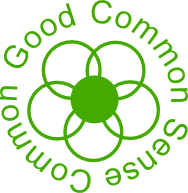Water
Cutting water pollution
04/06/18 - VIDEO: What are plastic microfibres and why are they polluting oceans? (9 mins) Our clothes are increasingly made using plastic based materials, such as polyester, nylon and acrylic. When washed, these fabrics shed tiny strands of plastic called plastic microfibres. These flow from drains to rivers and oceans, may be eaten by marine life and can end up back on our plates - studies have found these fibres in our food – from mussels and table salt to honey and beer. Like plastic micro-beads, these microfibres are a plastic pollution and are thought to absorb toxic chemicals, however more research is needed to understand the long-term impact on health. They're also very difficult to see which is why it’s taken us so long to realise they're such a problem. Scientists estimate that 35% of primary microplastics entering our oceans come from washing textiles. In fact, they're thought to be the largest contributor of plastic in our oceans. According to Ellen MacArthur Foundation, this is means around half a million tonnes of plastic microfibres a year contribute to ocean pollution and, unlike microbeads, they can't simply be removed from our supply chain.
The Bid for Clean Water - a 2014 film from South West Water, the Westcountry Rivers Trust and the University of East Anglia, shows how farmers, water company customers and the environment benefit from on-farm improvements to cut pollution.
Why is wasting water such an issue?
It’s not just the water we need here in the UK that’s important – water is needed to produce the things we use and eat that are made abroad too, often where there’s less regular rainfall than here in the UK. We often just think of the water we use to drink, shower, to have a bath, to wash up, or to clean the car but every product we use every day has used water in its production, transport and packaging before it reaches you – virtual water if you like. This gives the wastage of food an even greater significance.
-
The WWF reveals that in 2008, UK has become the sixth largest net importer of water in the world. Only 38% comes from within the UK the rest depends on water systems within other countries, some of which are facing serious water shortages.
-
In the UK, the average household water use for washing and drinking is about 150 litres a person daily, but we consume about 30 times as much in "virtual water" which is used in the production of imported food and textiles. 140 litres of water will have been used to bring you a single 125ml cup of coffee. 15,500 litres to bring you 1kg beef. The large quantities of water used to grow salad crops grown in southern Spain has led to salination of the water table by the infiltration of sea water as the fresh water pressure drops.
-
"What's particularly worrying is that huge amounts of the food and cotton we consume are grown in drier areas of the world where water resources are either already stressed or very likely to become so in the near future," said Stuart Orr, WWF's water footprint expert. Listen to Stuart Orr of WWF explain the report.
-
Treating and pumping drinking water and waste water uses a lot of energy, with the UK water industry accounting for around 1% of UK CO2 emissions. Amazingly, domestic water heating is responsible for 5% of UK CO2 emissions, and 25% of your household energy bill.
-
Waterwise show that large savings can be made by simple changes to the way water is used at home. If your home doesn't have a water meter you can get one fitted to monitor your consumption, you could also save money if you only have 2 people living in the house, see the Thames Water website for ideas to save water. Get a rainwater butt to store water for your garden.
- Extensive list of water conservation tips - well over 100 simple tips to avoid wasting water in the home and garden.
Is drinking bottled water a waste of resources?
- On average each person in the UK drinks almost 40 litres of bottled water per year. This is particularly unecessary considering our tap water is safe to drink.
-
Most plastic bottles will end up buried in landfill sites, where they take hundreds of years to decompose. The energy cost of producing billions of plastic bottles from oil, transporting the bottles over thousands of miles and then disposing of the bottles in landfill sites or incinerators makes bottled water one of UK's most wasteful luxuries. Even if the bottles are recycled, the resources and transport involved with bottled water are incredible - it takes up to 12 litres of water to make one litre of bottled water and hundreds of times more CO2 than tap water.
-
Drink tap water rather than bottled water - filter it first if you prefer the taste, either use a filter jug for the fridge or have a filter tap added to your kitchen sink. Watch Pur's Voice of Water 'Believe It' advert to see water in a different light. There are recycling bins for BRITA water filter cartridges at Robert Dyas in Witney.
-
Ask for tap water at restaurants rather than bottled water - often the tap water will be filtered and served with ice and lemon.
-
Bottled water consumption at the global level reached 154 billion litres (41 billion gallons) in 2004 - an increase of almost 60% in five years. The United States is the leading country in total bottled water consumption and Italians drink more per person than any other country. However, the fastest growth in bottled water is coming from developing countries with consumption tripling in India and more than doubling in China over the past five years.
